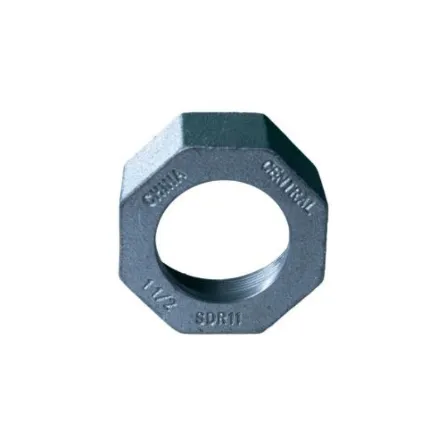Understanding the intricacies of plumbing not only requires technical expertise but also a keen insight into common issues encountered during installations and repairs. One of the pivotal components in plumbing is the 90-degree elbow, a fitting that changes the direction of flow. Its importance in ensuring efficient water distribution cannot be overstated.

A seasoned plumber can confirm that choosing the right 90-degree elbow is critical. Made from a variety of materials such as PVC, brass, or copper, each type serves distinct purposes. For example, PVC elbows are renowned for their anti-corrosive properties and ease-of-installation, ideal for cost-effective domestic setups. Conversely, copper elbows offer superior thermal resistance, making them suitable for hot water systems.
The application of a 90-degree elbow isn't simply about redirecting pipe flow. Its structural integrity is key to preventing leaks, minimizing turbulence, and maintaining optimal pressure. In commercial applications, particularly in chemical processing plants, using stainless steel 90-degree elbows is crucial to withstand high pressure and temperature extremes, thus ensuring long-term efficiency.

Real experience obtained from multiple installations illustrates that ensuring the precise fit and compatibility of a 90-degree elbow with pre-existing pipes is imperative. To avoid common pitfalls such as leaks or unnecessary strain on the pipe, plumbers must measure both the internal diameter of the pipes and the desired directional change accurately. Skipping these steps often leads to costly repairs down the line, something no homeowner appreciates.
A critical aspect is recognizing the impact of the elbow on water velocity and pressure. An abrupt 90-degree turn inherently introduces resistance, potentially leading to pressure loss. Engineers often recommend gradual bends, whenever space and design permit, to alleviate this issue. However, in compact installations, the 90-degree elbow remains indispensable due to its compatibility with tight spaces.
The expertise in utilizing 90-degree elbows extends beyond simple installation. Maintenance plays a crucial role in extending the life of plumbing systems. Performing regular inspections for signs of wear, corrosion, or blockage is essential. Many professionals advocate for the periodic replacement of elbows in systems with high mineral content in water, as these elements can accelerate decay.
90 elbow
Moreover, when choosing a 90-degree elbow, consider its compliance with industry standards such as ASME or ASTM. These standards ensure the elbows are manufactured to precise specifications, thereby offering reliability and safety in critical systems. Relying on certified components builds a foundation of trust with clients, underlining a professional's commitment to quality craftsmanship.
While professional expertise is crucial, imparting knowledge also forms a part of the authoritative role in plumbing. Educating clients about the significance of using certified 90-degree elbows and the potential risks of counterfeit products enhances credibility. It empowers them to make informed decisions, especially in DIY settings where professional oversight might be limited.
A comprehensive understanding of 90-degree elbows extends to innovative technologies emerging in the market. For instance, smart plumbing systems integrating sensors to detect leaks or pressure drops are gaining traction. Incorporating such technology with traditional components like elbows can significantly mitigate water damage risks, providing an added layer of security to consumers.
Ultimately, trustworthiness in employing 90-degree elbows intersects with ethical practices. Providing transparent quotations, using only high-quality materials, and adhering to safe plumbing practices are non-negotiable standards that elevate a plumber's reputation. Such dedication not only guarantees efficient water flow systems but also fosters long-term client relationships.
In summary, the art and science of utilizing 90-degree elbows in plumbing encompass a wide spectrum of knowledge, from technical precision and material understanding to maintenance and client education. The journey from a novice to an authoritative presence in the field hinges on these pillars, ensuring each installation not only meets technical excellence but also client satisfaction.
Post time:
Januari-23-2025











